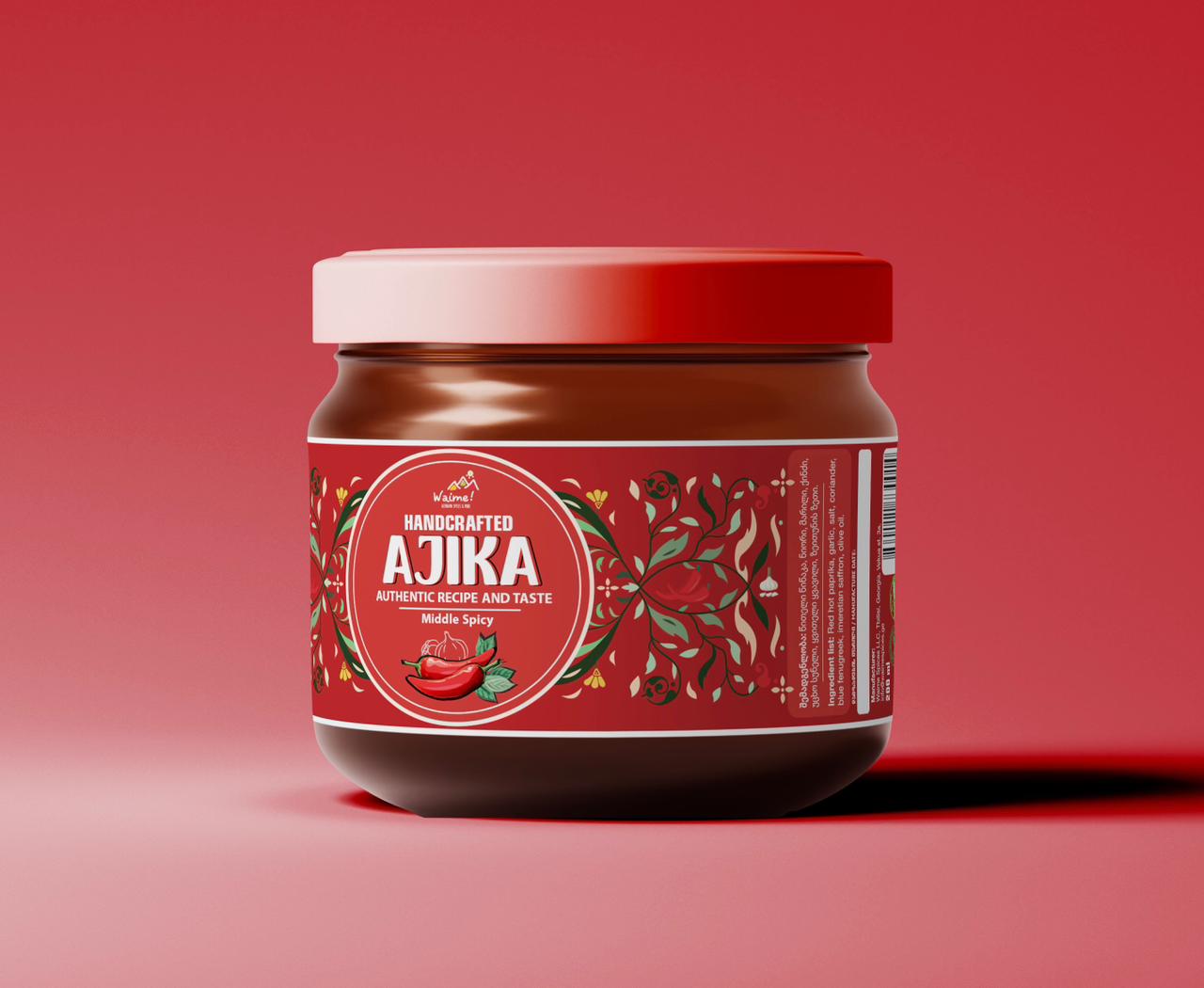აჯიკის ისტორია / History of Ajika
ლეგენდის მიხედვით, აჯიკის ისტორია იწყება XV საუკუნეში, როცა დასავლეთ საქართველოში მწყემსები მნიშვნელოვან როლს ასრულებდნენ ადგილობრივ ეკონომიკაში. მარილი მაშინ ფასეული რესურსი იყო, რომელიც გამოიყენებოდა არა მხოლოდ საკვების შესანახად, არამედ გემოს გასაუმჯობესებლად. ადგილობრივმა ფეოდალებმა, რომლებმაც იცოდნენ, რომ მწყემსებს შეეძლოთ მარილის ნაწილი თავისთვის აეღოთ, დაიწყეს მისი შეზავება წითელი წიწაკით. ეს იყო ჭკვიანური ხრიკი, რომ მარილი ზედმეტად ცხარე ყოფილიყო დიდი რაოდენობით გამოსაყენებლად.
თუმცა შედეგი მოულოდნელი აღმოჩნდა: მწყემსებმა არა მხოლოდ არ შეწყვიტეს მარილის აღება, არამედ დაიწყეს მისი შერევა სხვა ინგრედიენტებთან, რათა ეს ნარევი უფრო გემრიელი ყოფილიყო. მათ დაამატეს ნიორი, ქინძი და სხვა სანელებლები, რაც ხელთ ჰქონდათ. ასე ნელ-ნელა ჩამოყალიბდა ის საფუძველი, რაც მოგვიანებით აჯიკა გახდა.
დროის გასვლასთან ერთად, რეცეპტი დიასახლისებმა დახვეწეს. სამეგრელოს ბაზრებში პოპულარული გახდა წითელი წიწაკისგან დამზადებული სქელი პასტები უნიკალური არომატით, რომლებიც თითოეულ ოჯახში განსხვავებულად მზადდებოდა. ეს რეცეპტები თაობიდან თაობას გადაეცემოდა და თითოეული ოჯახი თავის საიდუმლოს სიფრთხილით ინახავდა.
აჯიკა სწრაფად გახდა ქართული სამზარეულოს შეუცვლელი ნაწილი, ხოლო სამეგრელოში იგი ზოგან ითვლებოდა კეთილდღეობის სიმბოლოდ. მეგრელებისთვის ცხარე კერძები ყოველთვის ასოცირდებოდა სახლის სითბოსა და გულითად მასპინძლობასთან.
ასე გადაიქცა მწყემსების პრაქტიკული ნარევი ერთ-ერთ მთავარ გასტრონომიულ სიმბოლოდ საქართველოში. მისმა რეცეპტებმა და კულტურამ საუკუნეებს გაუძლო და ქვეყნის მემკვიდრეობის განუყოფელ ნაწილად იქცა.
გამოყენება:
წაუსვით შემწვარ ბოსტნეულს, დაამატეთ მარინადებში ან გამოიყენეთ როგორც სოუსი პურთან, ყველთან, სალათებთან ან შემწვარ კარტოფილთან.
_________________________________________
Ajika is a traditional paste made from red hot peppers, originating from western Georgia. It has been recognized as a cultural heritage monument of Georgia. According to legend, the story of ajika begins in the 15th century, during a time when shepherds in western Georgia played an important role in the local economy. Salt was a valuable resource, used not only for preserving food but also for enhancing its flavor. Local feudal lords, aware that shepherds might take some of the salt for themselves, began mixing it with ground red pepper. This was a clever trick to make the salt too spicy to use in large quantities.
However, the result was unexpected: not only did the shepherds continue to take the salt, but they also started mixing it with other ingredients to make the mixture more palatable. They added garlic, coriander, and other spices they had at hand. Gradually, this evolved into the foundation of what would later become ajika.
Over time, the recipe was refined by housewives. In the markets of Samegrelo, thick pastes made from red peppers with a unique aroma became popular, with each family creating its own version. These recipes were passed down from generation to generation, with each family guarding their secrets.
Ajika quickly became an essential part of Georgian cuisine, and in the Samegrelo region, it was even considered a symbol of prosperity. For the Megrelian people, spicy dishes always symbolized the warmth of home and the hospitality of the hosts.
Thus, what began as a practical mixture for shepherds evolved into one of the key gastronomic symbols of Georgia. Its recipe and culture have endured through the centuries, becoming a treasured part of the nation's heritage.
How to Use Ajika:
- Roasted Vegetables: Toss roasted eggplants, zucchini, or bell peppers with a small amount of ajika for a spicy, smoky kick.
- Marinades: Mix ajika with olive oil, lemon juice, and herbs to marinate meats like chicken, lamb, or beef before grilling or roasting.
- Sauce for Bread or Cheese: Spread ajika on fresh bread or pair it with cheeses like sulguni or feta for a quick appetizer.
- Salads: Add a dollop of ajika to dressings for tomato, cucumber, or bean salads to intensify the flavors.
- Roasted Potatoes: Stir ajika into roasted potatoes or fries for a spicy twist.
Its balance of heat and aroma makes it a fantastic addition to many dishes, allowing you to explore Georgian culinary traditions in a modern way.
Follow us on instagram: @waimespices

